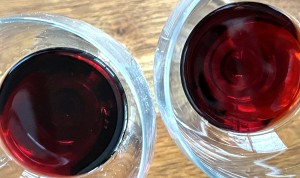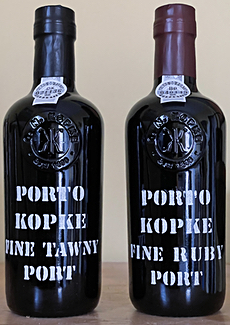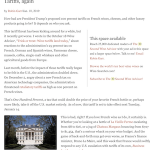Christmas and Hanukkah are past, we’ve marked the Winter Solstice, and a welcome end to 2020 is close at hand. As winter clamps down on the Northern Hemisphere, let’s talk about winter warming wines.
Explore Wine-Searcher
Wine-Searcher.com makes it easy to find the wines you love, compare prices, find bargains, and locate vendors. Visit Wine-Searcher now to discover its many features, including its popular Top 10 Best Value Wines.
For me, the perfect wines to warm the body and spirit are the powerful fortified wines, the traditional potions that gain warmth and strength from the addition of a little brandy toward the end of the wine-making process.
This treatment not only adds a touch of alcoholic strength to the wine but adds flavor, creates a strong yet sweet wine, builds ageworthiness, and ensures that the wine will last for a long time in barrel or in bottle. Indeed, that was the idea behind the evolution of fortified Port in the 1700s, when producers and merchants in Portugal sought a wine that would remain fresh and sweet over its ocean voyage to Britain.
Port, of course, is not the only fortified wine. I’ll gladly take a winter (or even summer) taste of Sherry, Madeira, Marsala, or even something more obscure. The concept of fortification is by no means limited to Port. But I come back to Port most often because (with the exception of the long-lived Vintage Port, which requires long cellaring and can be costly), it’s relatively affordable even in today’s inflated market.

Porto Kopke Fine Ruby (left) shows a darker, purpler color than the bronze-red Porto Kopke Fine Tawny at right.
The two most available styles in the lower price range are Ruby and Tawny Port. What’s the difference? Just for fun, I closed out the year with side-by-side tastes of each, making the experiment affordable by picking up 375ml half-bottles for a penny under $10 each.
Ruby Port is a non-vintage blend of wine from several different harvests. It may lack the complex majesty of a well-aged Vintage Port, but its simpler, perhaps rougher style makes sense at its relatively accessible price. It’s a good starting point for a voyage of Port discovery.
Tawny Port is kept for years in barrels before being bottled, a process that smooths and mellows the wine while its color lightens from dark ruby red to a reddish-brown or bronze hue and its oxidized flavors add earthy, nutty notes.
More upscale Tawnies may be labeled to indicate the time they spend in barrel – 10, 20, even 30 years or more – and their prices go up accordingly. You’ll also see variations like Late Bottled Vintage Port, a finer, vintage-dated Ruby; and Colheita, a vintage-dated Tawny.
Never mind the variations, though: Basic Ruby and Tawny Ports are pleasant in their own right. You can count on them being deliciously sweet, free of the heavy sediment that requires Vintage Port to be decanted; and they are ready to drink the day you bring them home. At $20 or so for a full bottle, even less for a smaller bottle, and sturdy enough that you can safely recork the wine and enjoy it over several days, these warming, cozy potions are a good option for a blustery winter evening.
You’ll find my report comparing Porto Kopke Fine Ruby Port and Porto Kopke Fine Tawny Port just below. They’re both excellent choices for the season.
If you’d like to read more about the history of Port, you’ll find this excellent 10-page account at the Port house Taylor-Fladgate’s website.
Today’s Sponsor:
Explore Wine-Searcher
Wine-Searcher.com is the place to go online if you want to find where to buy a particular wine that interests you. What’s more, Wine-Searcher.com offers so much more. It’s well worth a visit just to discover its many features, including its popular list of the world’s Top 10 Best Value Wines.
Today’s Tasting Report
Porto Kopke Fine Ruby Port ($9.99)
Kopke’s Fine Ruby Port shows a dark purple color in the glass, with just a hint of its namesake ruby showing along the edge when you hold it up to the light. Its aromas and flavors are shy at first but open up with time in the glass to reveal dark red-berry and blackberry scents, leading into a full, smooth flavor that coats the palate. Fresh-fruit acidity and soft tannins become more apparent as you taste the wine, but it’s easy and ready to drink on its own or with cheese or nuts. As is typical of Port, its 19.5% alcohol is a brooding presence, but it doesn’t show up as harshness or heat. U.S. importer: Wine in Motion, Newark, N.J. (Dec. 27, 2020)
Porto Kopke Fine Tawny Port ($9.99/375ml)
If I were judging Kopke Fine Tawny Port on sight, I might have guessed it was a ruby, based on its bright reddish-purple color. But hold the glass up to the light and its bronze edge gives it away. Brown sugar and a hint of walnuts waft over a good plummy scent and carry over to a mouth-filling flavor that wakes up your taste buds with gentle whacks of tart acidity and smooth but drying tannins. Alcohol content, 19.5%. U.S. importer: Wine in Motion, Newark, N.J. (Dec. 27, 2020)
FOOD MATCH: Both wines went nicely with assorted cheeses. Kopke lists strawberry or raspberry desserts with the ruby Port while enjoying the tawny Port with walnuts, tiramisu, or desserts with caramel of coffee flavors.
WHEN TO DRINK: Tawny Ports are naturally oxidized, sweet and high in alcohol, so they hold up quite well in the bottle. Don’t cellar it forever – it isn’t likely to improve, and the tiny cork will eventually dry out; but there’s no rush to drink. Ruby Port, too, will hold up for a few years on the wine rack, but drink it first if you have both.
VALUE:
My local price for a 375ml half-bottle matches Wine-Searcher.com’s $20 average U.S. retail for a full-size bottle of either Porto Kopke Fine Ruby Port or the Fine Tawny Port. That’s an excellent buy for a strong, warming, winter sipping wine.
WEB LINKS
Here’s a link to Kopke’s English-language technical sheet on its Fine Ruby Port.
Here’s a link to its tech sheet on Fine Tawny Port.
Click here for Kopke’s full portfolio featuring dozens of Port wines.
FIND THESE WINES ONLINE:
Check prices and find vendors for Porto Kopke Fine Ruby Port on Wine-Searcher.com.
Check prices and find vendors for Porto Kopke Fine Tawny Port on Wine-Searcher.com.
Follow this Wine-Searcher link to find listings for dozens of other Ruby Port wines.
This Wine-Searcher link will take you to listings for a wide selection of Tawny Port.
More affordable wines
Want tips to still more good, inexpensive wines? Here are Wine-Searcher links to vendors and prices for a bunch more wines for $10 or less that I’ve told you about during the past year or two. Please tell us about your favorites!
- La Vieille Ferme Vin de France Rosé ($8.99)
- La Fiera Montepulciano d’Abruzzo ($8.99)
- Laroque Cité de Carcassonne Cabernet Franc ($9.99)
- Domaine de Pouy 2016 Côtes de Gascogne ($7.99)
- Alamos Mendoza Malbec ($9.99)
- Caposaldo Chianti ($8.99)
- d’Arenberg McLaren Vale “The Stump Jump” ($9.99)
Sponsor the Wine Advisor.
We appreciate your support
Support The 30 Second Wine Advisor and help us pay the rent while reaching 25,000 dedicated readers with your sponsorship message in this space, at the top of this E-letter, and on our social media. If you’re an established business in wine, food, and similar ventures, there’s no better way to focus your message toward an audience that comes here for just those topics. See our Sponsorship Page, or email Robin Garr for more information.
Wine Forum and Social Media
If you have questions, comments or ideas to share about today’s article or wine in general, you’re always welcome to drop by our online WineLovers Discussion Group, the Internet’s first and most civil online community.
Discussions are open for public viewing, but you must register to post. If you’re a Facebook user, you can join our forum with a single click! All you need to do is visit the forum and click “Social Login” at upper right.
We’d also be delighted to have you visit and “Like” our WineLovers Facebook Page. This way you can get Facebook notifications when there’s a new The 30 Second Wine Advisor issue or a topic of particular interest on the WineLovers Discussion Group (WLDG).







